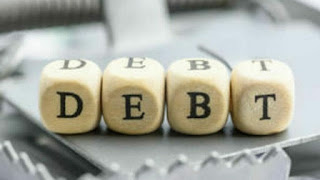Despite significant strides in economic growth, millions of people still fall prey to the devastating misfortune of the debt trap. To fully understand how to escape this dilemma, one must first comprehend the debt trap meaning. A debt trap refers to a situation where a person or an institution borrows money and finds themselves in an inescapable situation, unable to repay due to high costs and interest rates. In most cases, these kinds of debts are unsecured loans.
Unsecured loans, by definition, are loans that are not protected by any asset or collateral. A credit card, personal loan, payday loan, or student loan are some examples of unsecured loans. They possess higher interest rates and require top-notch credit scores, as the lender faces a greater risk of default.
The spiraling effects of a debt trap can create a nagging feeling of financial burden, hampering the enjoyment of life and limiting one's potential. Below are some strategies that can help you break free from this worrying predicament.
1. Identify and Understand Your Debts:
Begin by making an accurate list of all the monies you owe—this includes credit card debts, mortgages, student loans, etc. Your list should include details such as the creditor, the total amount owed, monthly payments, and the due date. By understanding your debt and who you owe, you can devise an informed strategy to pay it off.
2. Create a Budget:
A crucial step to escaping the debt trap is creating a budget. A budget will help you identify where your money goes. To create a viable budget, determine your income, list your monthly expenses, differentiate between necessities and luxuries, and plan on saving money each month. Remember to adjust your budget accordingly and review it regularly to ensure practicality and adequacy.
3. Pay Off High-Interest Debts First:
High-interest loans such as unsecured loans usually take the largest slice of your income. It’s advisable to channel more resources into paying off these loans first as they add the most pressure to your financial situation. By doing so, you not only minimize the interest that accrues over time but also free up more income for other uses.
4. Seek Professional Help:
A financial adviser can provide specialized input on how best to manage your debt. Financial advisers can help structure a debt management plan, negotiate with creditors on lower interest rates, and generally guide you through the pathway of financial recovery.
5. Limit Loan Acquisition:
One way of avoiding the plunge into a debt trap is by limiting loan acquisition. As you learn the mechanics, remember that not all loans are bad—it only becomes hazardous when one borrows more than they can afford to pay back. Be cautious of unsecured loans examples that are presented with great appeal but may have underlying high interest and costs.
6. Save and Invest:
Building an emergency fund can provide a safety net, reducing the need to rely on borrowing to cater to unexpected expenses. Furthermore, investing in liquid assets generates more income and increases an individual's economic viability, providing additional funds to service any outstanding debt.
7. Education:
Enhancing one's financial literacy is an essential key to escaping the financial debt trap. A deeper understanding of concepts such as interest rates, credit score implications, loan agreements, and compound interest can all go a long way in successful financial management.
In summary, escaping the debt trap requires discipline, patience, and commitment. It isn't a journey that is accomplished overnight. However, by understanding debt trap's meaning, recognizing the risks posed by unsecured loans, applying the outlined strategies, and seeking professional assistance when necessary, breaking free from a financial burden becomes a very achievable endeavor. Remember, the step to financial freedom and prosperity starts with the choice to escape the debt trap.











No comments:
Post a Comment